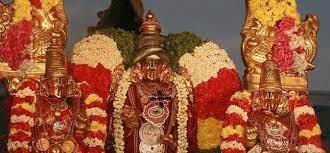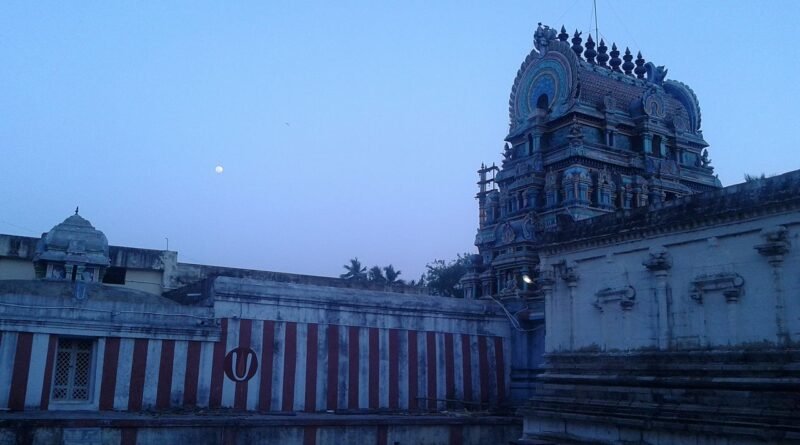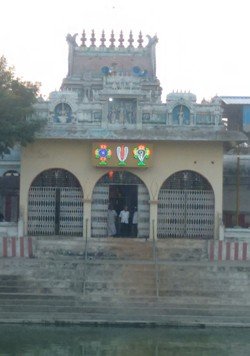Devaadi Raja Perumal temple
The Devaadi Raja Perumal temple (Tamil: தேவாதிராஜன் பெருமாள் கோயில்) (also called Amaruviappan temple) in Therazhundur, a village in Mayiladuthurai district of the South Indian state of Tamil Nadu, is dedicated to the Hindu god Vishnu. Constructed in the Dravidian style of architecture, the temple is glorified in the Naalayira Divya Prabandham, the early medieval Tamil canon of the Alvar saints from the 6th–9th centuries CE. It is one of the 108 Divya Desams dedicated to Vishnu, who is worshipped as Amaruviappan, and his consort Lakshmi as Sengamalavalli Thayar. The original structure of the temple was built by the Karikala Chola during the 1st century CE, with later additions from the Cholas during the 11th century.
A granite wall surrounds the temple, enclosing all its shrines. The temple tank is located opposite to the temple, outside the main entrance. The temple follows Vadakalai tradition of worship. Six daily rituals and many yearly festivals are held at the temple, of which the Vaikasi Brahmotsavam during the Tamil of Vaikasi (during May – June), and Vaikuntha Ekadashi during Margali (December – January) being the most prominent. The temple is maintained and administered by the Hindu Religious and Endowment Board of the Government of Tamil Nadu.
Legend
According to the temple’s sthala purana, Uparichara Vasu, a king, obtained boons after severe penance for years from Brahma that would enable him to fly with his chariot. While flying at this place, his chariot (locally called ther) fell in waters and splashed on sage Agastya who was doing penance. The chariot got stuck in the place and hence it came to be known as Theranzhundur (where the chariot got immersed). Another variant, Uparichara Vasu ruled in favour of celestial deities against the sages and the sages cursed that his chariot would not any further and it got stuck in the place. A third variant notes that the king did not heed the request of her queen to get down to worship Vishnu at this place while flying in his chariot and on account of divine powers his chariot was held at this place.
As per Hindu legend, Brahma, the Hindu god of creation, drove the cattle belonging to Krishna, an avatar of Vishnu. Krishna created another herd in the meanwhile. Realising that the herd belonged to Krishna, Brahma apologized and wished Krishna to set his abode at this place. Since Krishna appeared for the cattle and settled here, the presiding deity is called Amaruviappan (the one who is flanked by cattle). Following the legend, the presiding deity in the sanctum is portrayed with cattle surrounding him. As per another legend, Prahlada, an ardent devotee of Vishnu feared Narasimha, the avatar that killed Hiranyakakashipu, the asura father of Prahlada. Amaruviappan appeared to console Prahalad. There is another belief that Kaveri, the river goddess prayed Amaruviappan to relieve herself off the curse by sage Agastya. Vishnu was pleased by the devotion of Kaveri and appeared here to please her devotion.
















